Exclusive 2019 Update: VICTORY AT THE VA – West LA Veterans Administration master plan protects old nuclear dump from development

This 530-page file includes numerous reports from the 1960s on and provides a great deal of information that previously had only been available in hard copy. Following are snippets and comments about parts of this multi-document PDF that are of particular interest including information that the dump had previously been bored and cored for radiation — the same kind of boring that the VA now proposes to do but that had failed to find anything in 1983. Some dump observers now advocate careful excavation of the dump rather than boring and coring.
P. 10/530:
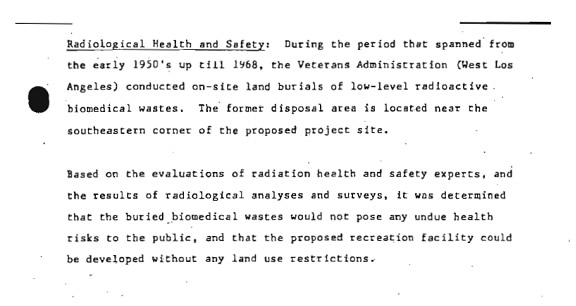 P. 25/530:
P. 25/530:
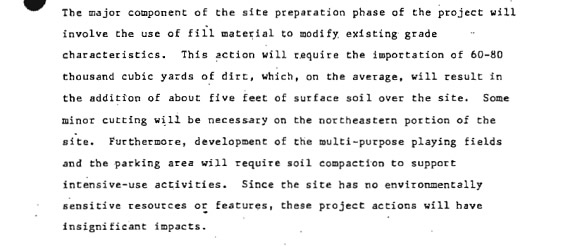
P. 66/530:
The Brentwood School Shared Property has been impacted by 1,4-dioxane, a carcinogen that is described below in “b,” according to a report on the athletic fields. Our initial expose, “Real Hot Property,” explored dioxane contamination: Another chemical buried in the site was dioxane, a known carcinogen. Though chemical records of the dump were usually destroyed after two years, UCLA divulged in 1981 that it had dumped chemicals at the VA dump. “If someone were to dig down in the old site they might find intact containers of toluene or dioxane,” wrote former UCLA director of Research and Occupational Safety, William E. Wegst. “I suppose one could imagine various hazardous scenarios developing as a result of someone digging many holes and retrieving many intact bottles of solvent.”
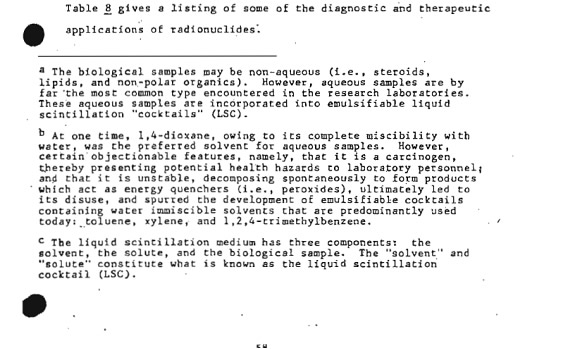 P. 71-72/530:
P. 71-72/530:
Information derived from this collection of Waxman-supplied documents shows that the dump operated from 1948-1968, which means, according to the information below, that there were no federal regulations for the first nine years of operation. Even after the rules commenced, they often allowed simply pouring or dumping radioactive waste directly on the ground, practices forbidden today.
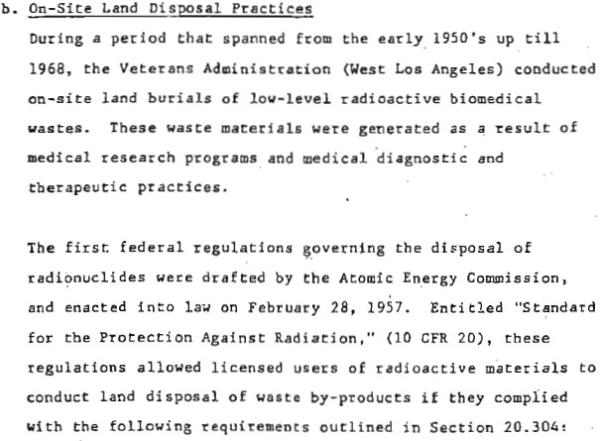
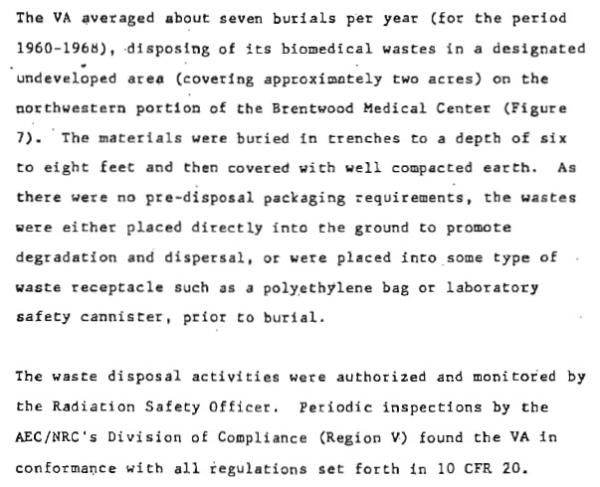
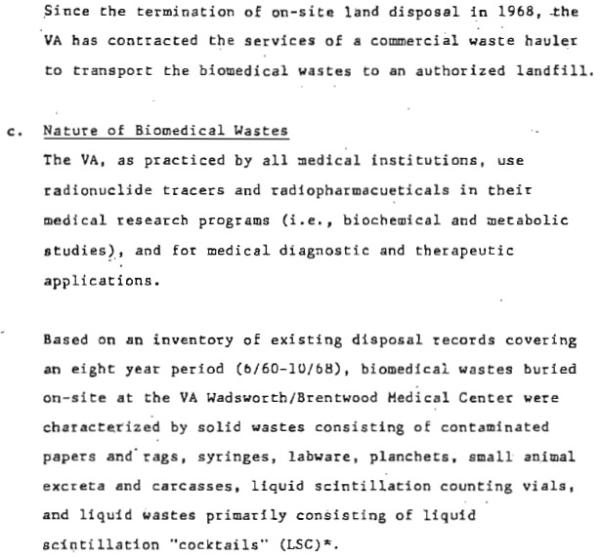

P. 124-128/530
The VA is ready to spend $1 million on Phase II of its Brentwood nuke dump survey, probably starting in early 2008. This phase is supposed to include boring. The VA has already stated that it expects to find nothing, which apparently suits it since it has made clear its intention to make the public comfortable with the reassurance that nothing is there.
But how can the VA make this assumption considering that boring would go subsurface in looking for radioactive and chemical contamination? There could be at least two reasons: one is that boring has already taken place, back in the Spring of 1983, as the document below shows — 85 surface and subsurface samples gathered with nothing detected. Another reason is that drilling bore holes is akin to looking for needles in a haystack by peering into it with a tube — not very effective.
Contrary to what EnviroReporter.com has reported before, boring may not be the best way to get to the “goo” in this dump. It has been suggested by people like Dr. Bennett Ramberg, who has commented extensively on the dump and our investigation, that it would be more effective to just begin excavating the dump carefully and disposing of any found contaminants in a licenced dump for low-level nuclear waste, such as the one in Buttonwillow, California. “This cuts to the chase and finds and gets rid of the waste,” Ramberg says. “And it precludes the expensive lab analysis of the borings that would probably yield nothing just like in 1983.”
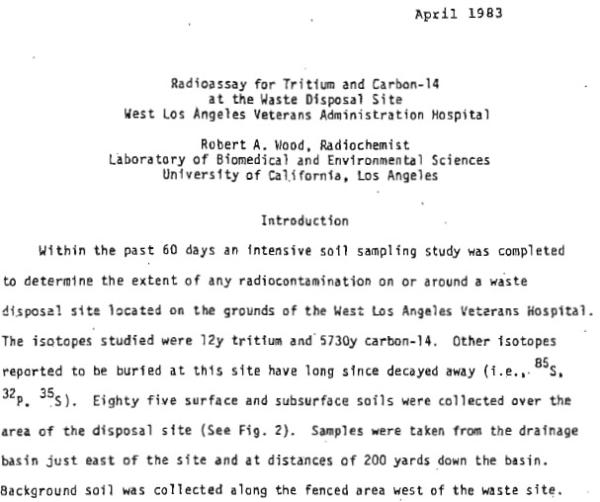
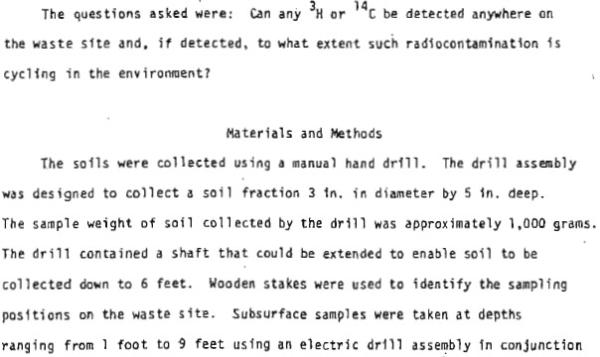
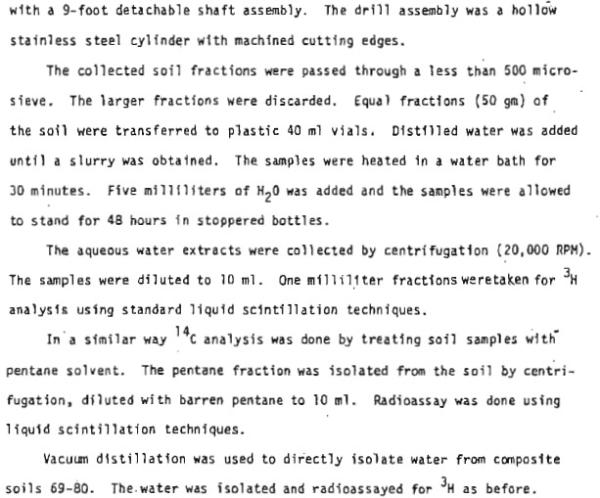
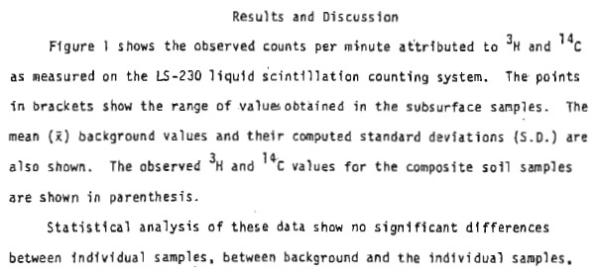
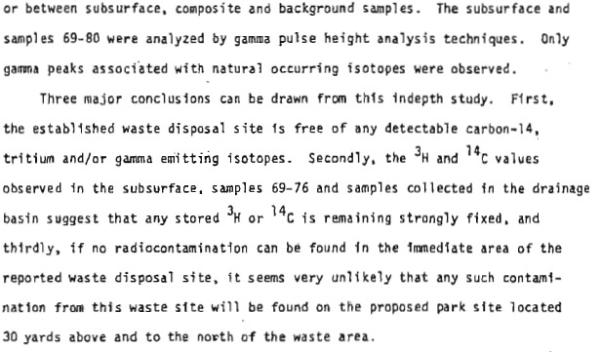
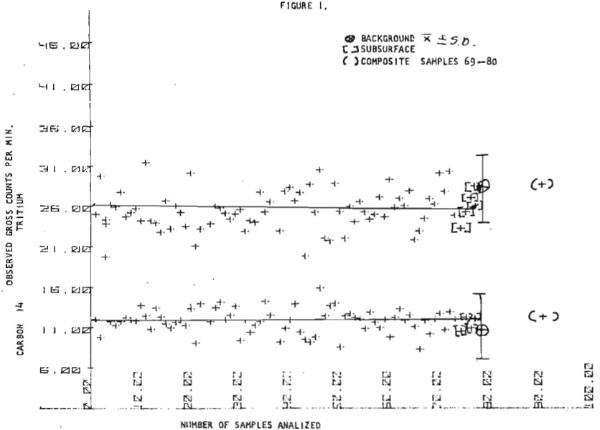
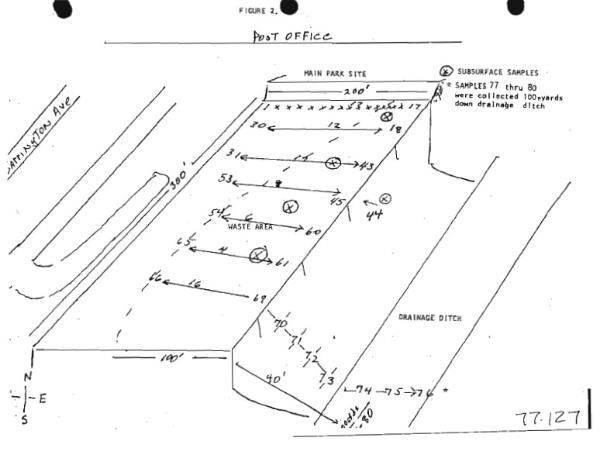
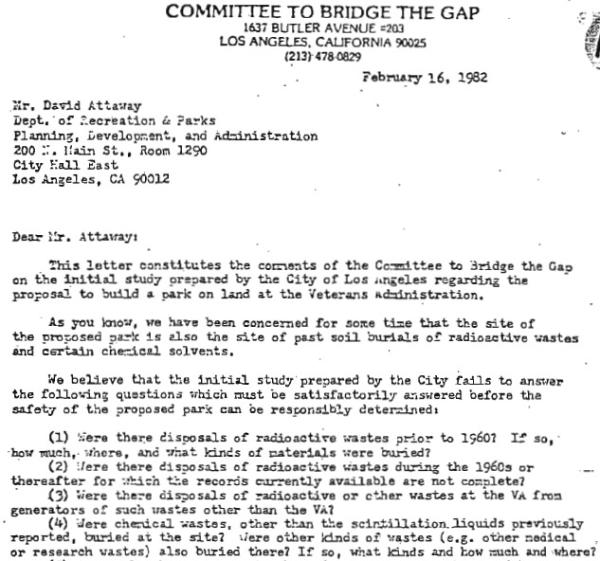
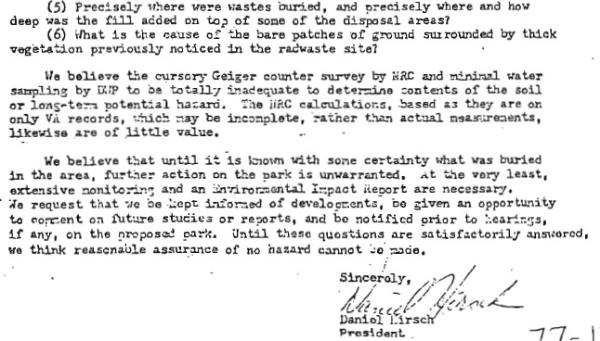
P. 479/530
As EnviroReporter.com has documented in “Where the Bodies are Buried,” there is a possibility that the radioactive cadavers of human corpses may be buried in the Brentwood nuke dump, as evidenced by the 1982 letter below. We wrote:
Given this extensive human radiation testing, what to do with bodies became a concern at the VA and UCLA. Records gleaned from the 1982 FOIA request to the VA indicate one 1964 meeting of the VA Center Radioisotope Committee that discussed “safe handling of cadavers containing radioactive isotopes.” The committee’s conclusions were blacked out by FOIA censors.
Other parts of this FOIA were blacked out but with an explanation. In a 1982 letter from the federal district counsel to the Los Angeles Federation of Scientists, which had submitted the FOIA request, the government wrote: “That information was withheld on the basis of potential employee misconduct leading to a civil and/or criminal investigation.” There is not, however, any evidence that human remains are in the dump.
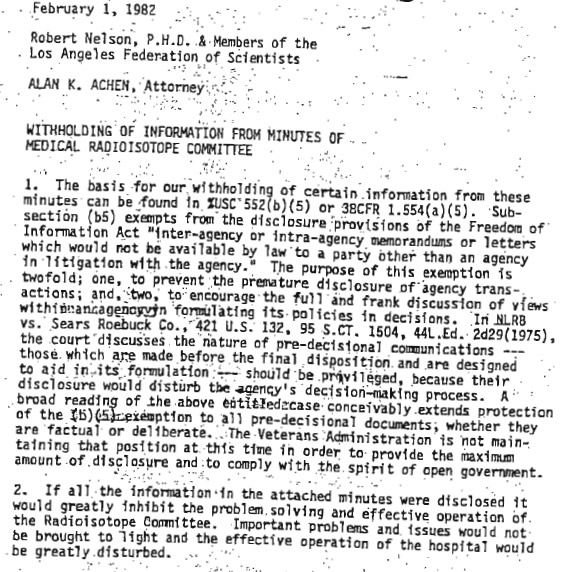
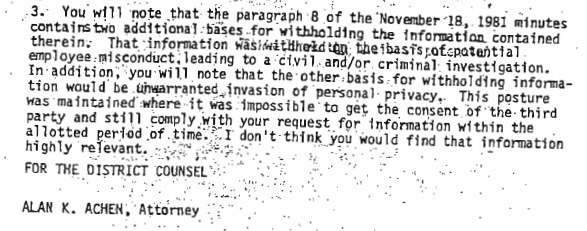
Exclusive 2019 Update: VICTORY AT THE VA – West LA Veterans Administration master plan protects old nuclear dump from development












Recent Comments